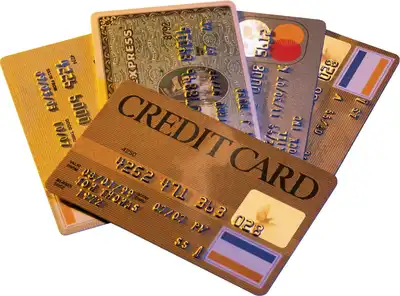Credit cards serve as both a payment method and a borrowing tool, providing cardholders with a revolving line of credit that they can use for purchases. While some credit card users take advantage of longer-term financing options, many transactions involve short-term credit. However, credit cards generally carry higher interest rates compared to traditional bank credit lines, typically around 20%, although some cards offer lower rates.
Credit card services involve two main parties: the payment processing entity and the debt underwriter. Companies like Visa or MasterCard offer payment processing services, but they do not own the cards themselves. Instead, the actual card ownership lies with the underlying institution, which could be a bank or a merchant that issued and manages the account associated with the card.
If a merchant issues the credit card, they might delegate the management of credit card lines to a financial institution or set up a subsidiary for this purpose. Although this aspect of the credit card business might be less visible to consumers, it is essential for such financial products to be managed by appropriate financial entities.
To qualify for a credit card, applicants must meet standard credit approval requirements, which typically include having sufficient income to make payments and possessing an acceptable credit rating. Credit cards can also be issued to individuals without an established credit history, serving as an entry point into the world of borrowing.
Unlike traditional lines of credit, credit cards are not limited to situations where one needs to borrow money for purchases. Many credit card transactions involve individuals who have the funds but choose to use their credit cards for the convenience of payment, efficient financial management, and the opportunity to earn rewards.

How Credit Cards Started
Credit cards have a long history, originating as a way for merchants to manage accounts with specific customers and extend credit to increase sales. Initially, this was a paper-based system, which became cumbersome for larger merchants, leading to the development of more efficient tracking methods.
Credit coins were used by merchants, imprinted onto sales slips to identify customers and track purchases. However, security was an issue as anyone possessing the coin could use it. The charga-plate, a metal piece with customer information and a signature strip, improved security and was retained by the merchant for verification.
The first charge cards appeared in the airline industry in 1934, allowing customers to buy now and pay later. These cards gained popularity among flyers, and by 1941, half of major airlines’ revenues were charged to such accounts. Installment plans with accounts also started around this time, giving customers the option to pay for purchases over time.
In the 1940s, gas cards were introduced, boosting the growth of charge cards alongside the automobile market. In the 1950s, the first general-purpose charge cards emerged, usable at various merchants. Central organization was essential, and banks played a crucial role by issuing their own cards. Third-party processors facilitated transactions across banks, leading to the emergence of major players like Visa, MasterCard, and American Express, who dominate the credit card market today.
The Impact of Credit Cards
Credit cards have been instrumental in driving sales and increasing consumer spending. Even in their early days, they faced criticism, with credit card issuers mailing out actual cards en masse, leading to some cards falling into the hands of those who wouldn’t have qualified for them. However, this helped elevate the use of credit cards to a significant status that benefited issuers in the long run.
In the past, credit cards competed mainly with cash, but today debit cards are also widely used. Still, credit cards account for about a third of all point-of-sale purchases, a number expected to grow further. Credit card companies charge higher processing fees than debit cards but often reward cardholders through various rewards programs, including cashback and merchandise incentives.
The availability and widespread use of credit cards significantly drive sales compared to cash and debit cards. People often use credit cards as cash equivalents out of convenience or to earn rewards. Additionally, credit cards enable people to make purchases on credit, further boosting sales.
The extensive use of credit cards benefits the overall economy, though some individuals may overextend themselves. While this can become burdensome at the individual level due to high interest rates, options like lower interest consolidation can help manage credit card debt.
Credit cards differ from other credit facilities in that they may allow one’s buying power to exceed their ability to service the debt, leading to potential risks. Therefore, cardholders must exercise diligence and restraint when using credit cards and avoid accepting credit line increases that could lead to financial strain.
When used responsibly, credit cards can offer great advantages for cardholders, merchants, credit card issuers, and the overall economy. The key lies in using credit cards wisely and being aware of the risks involved, ensuring credit card spending remains manageable and sustainable.




